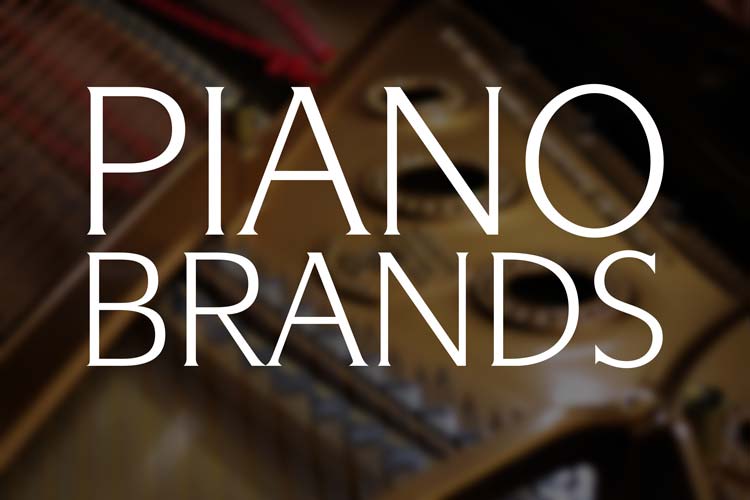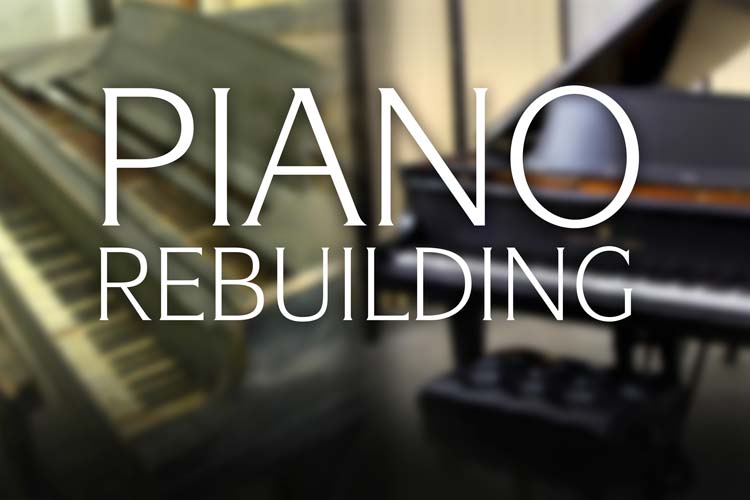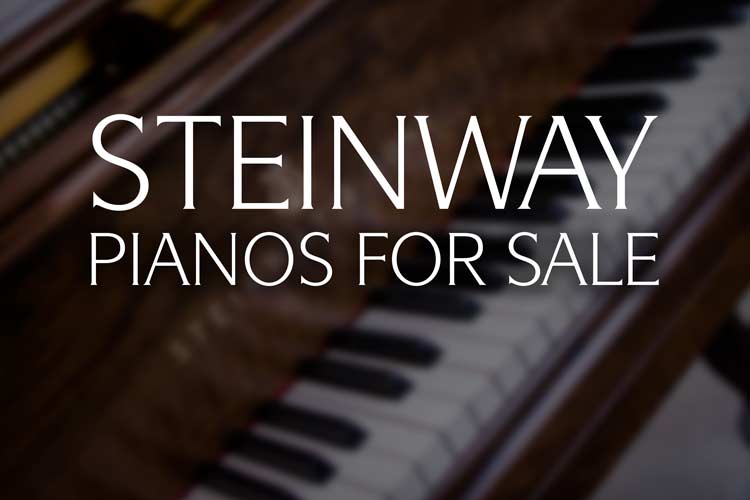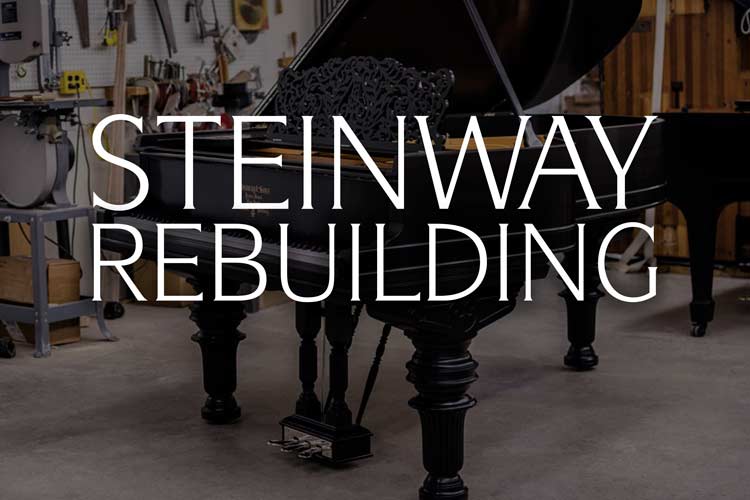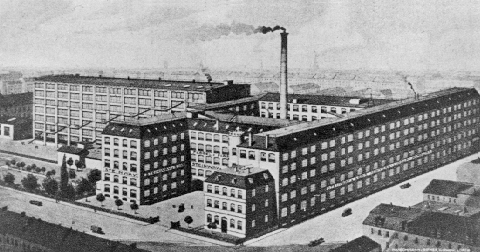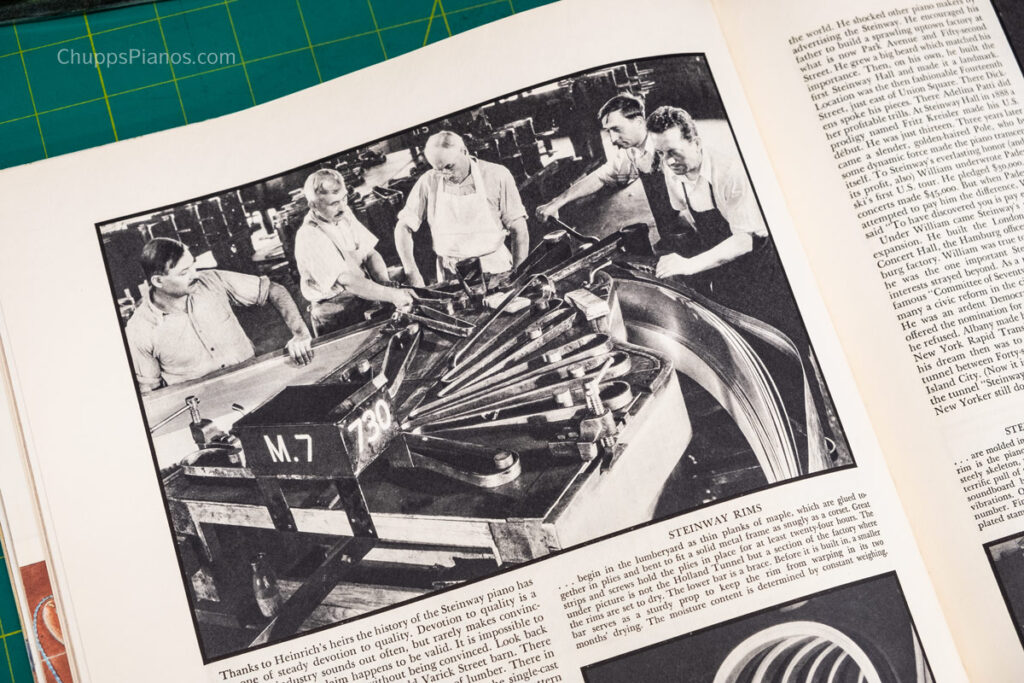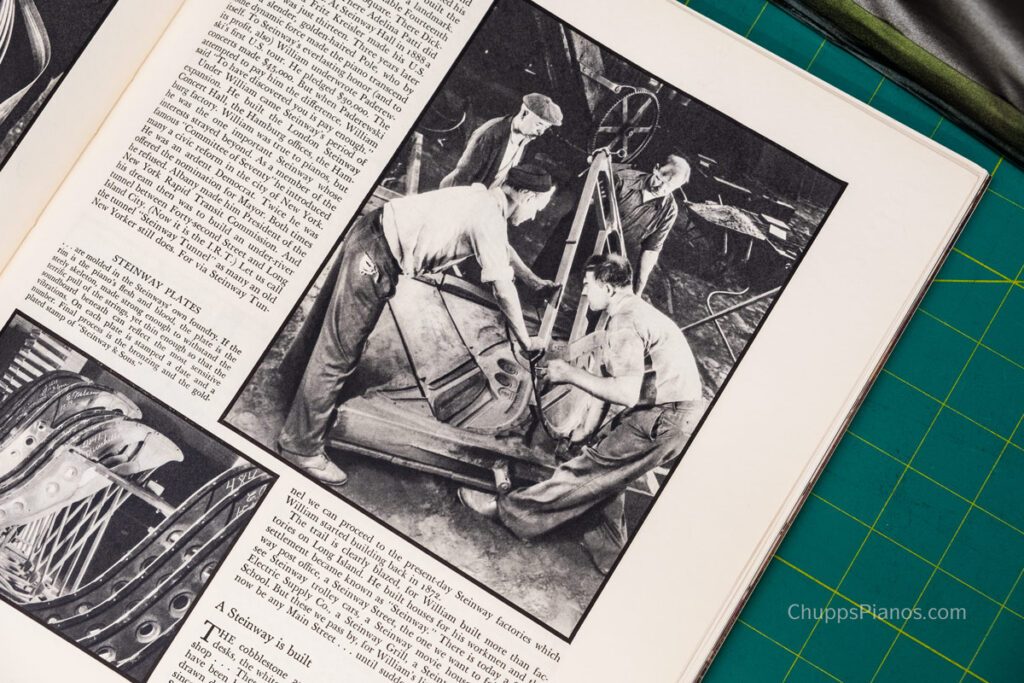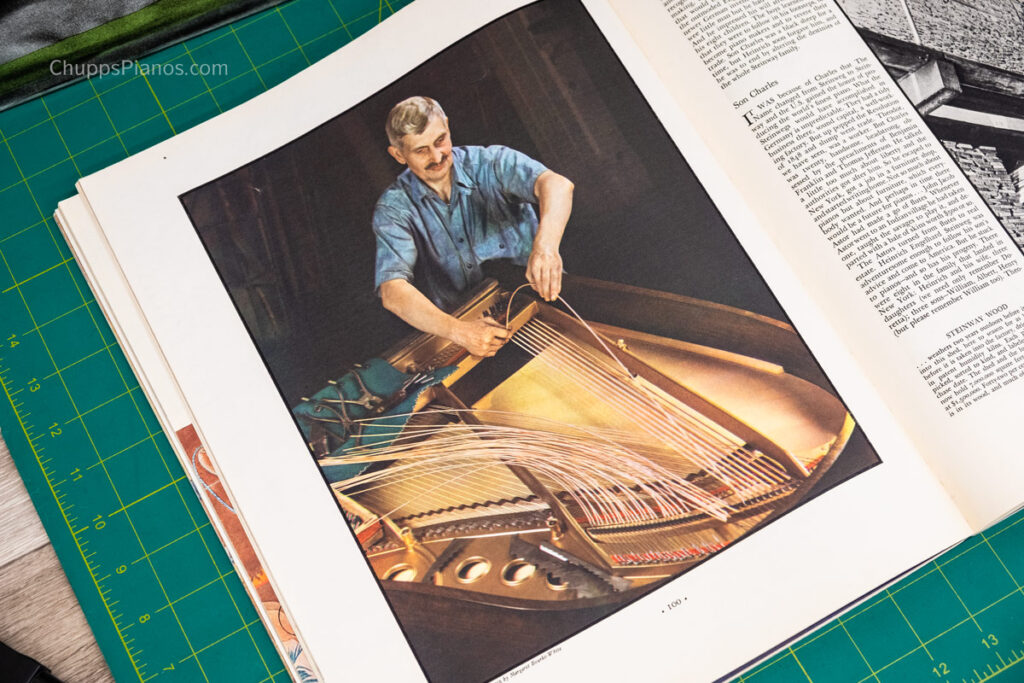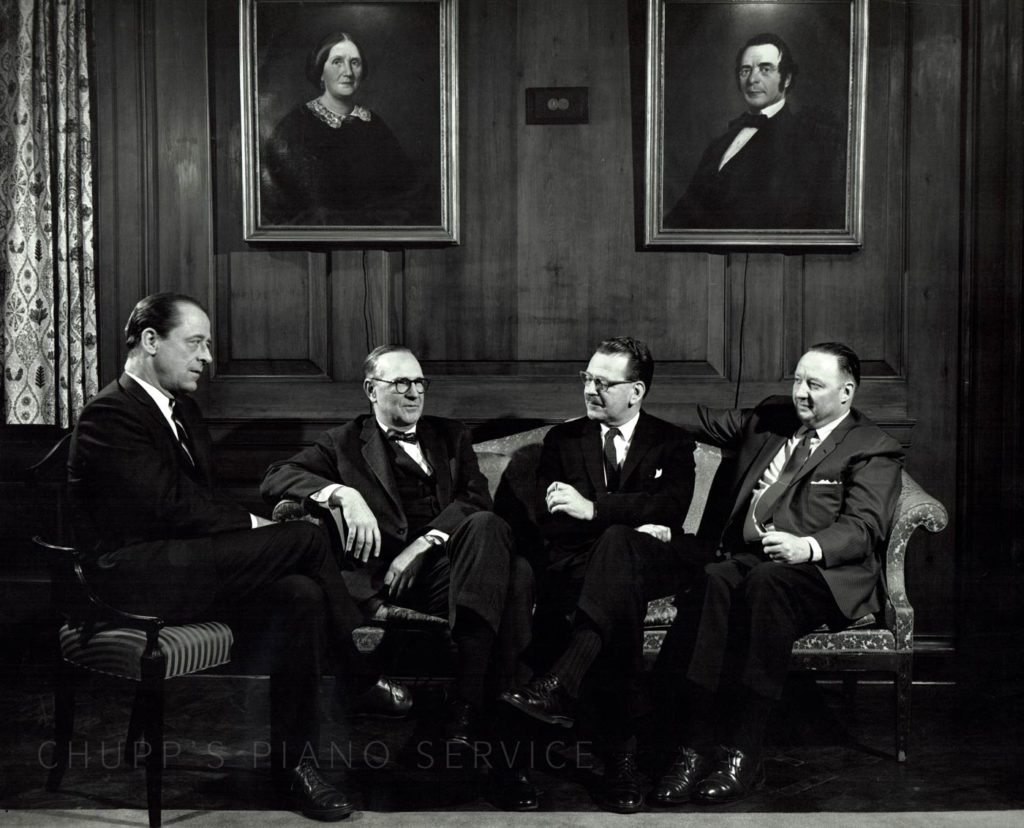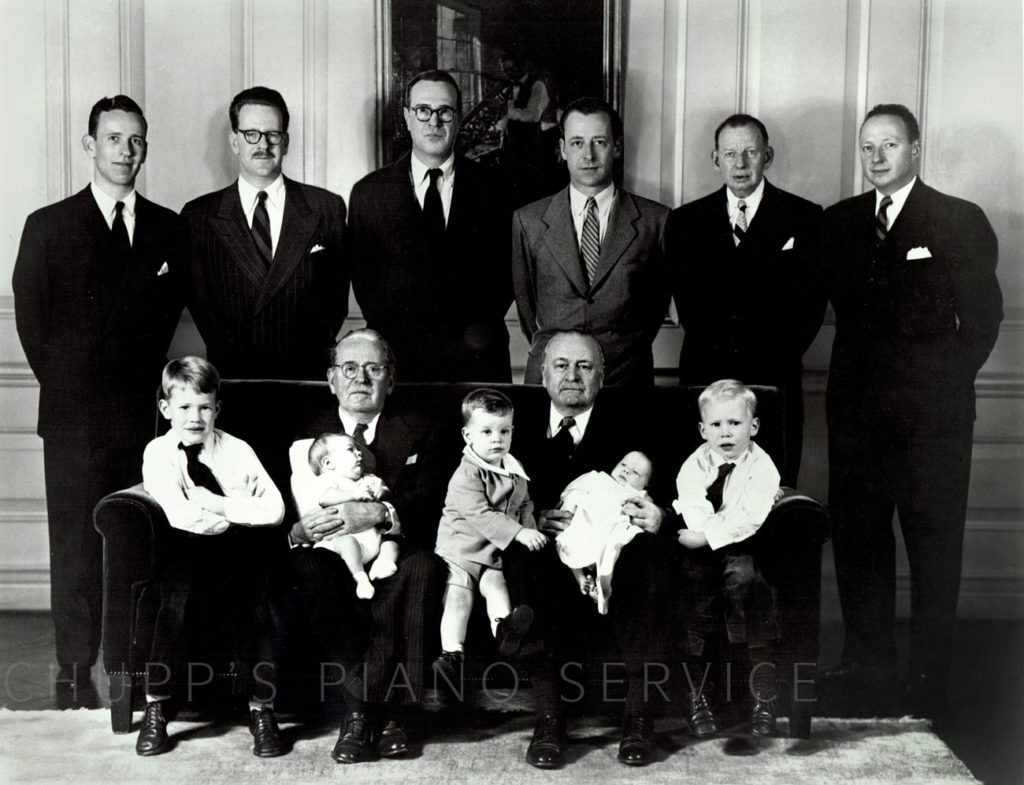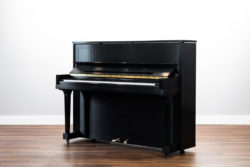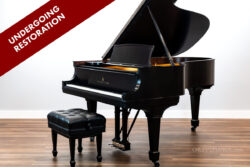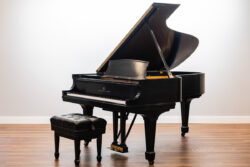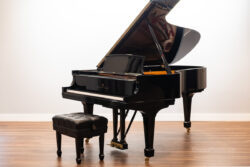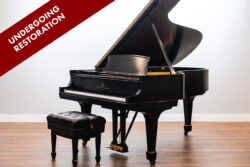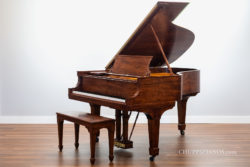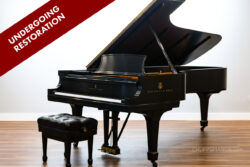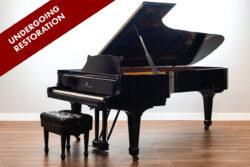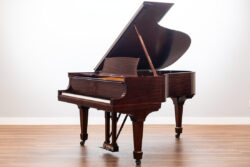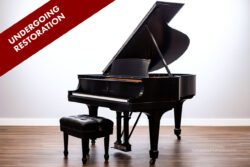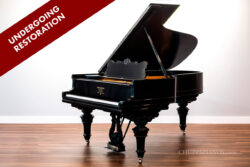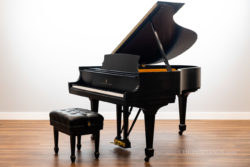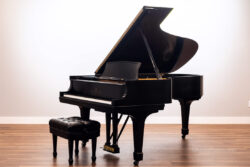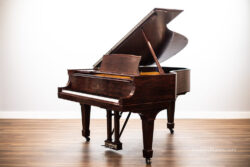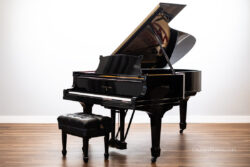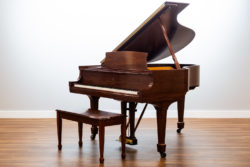What Don’t You Know About Steinway History?
Many appreciate the grandeur, elegance, and superior tone of a fine Steinway & Sons instrument, but few are aware of the Steinway & Sons history begun by a revolutionary individual by the name of Heinrich Engelhard Steinweg (later known as Henry E. Steinway Sr) to make that magnificent concert instrument possible. Since 1853, no name has represented quality and elegance in music like Steinway & Sons. During their early days, the craftsmanship and musical qualities of their legendary pianos became cemented in history. Here is the story of Steinway.
Heinrich Engelhard Steinweg:
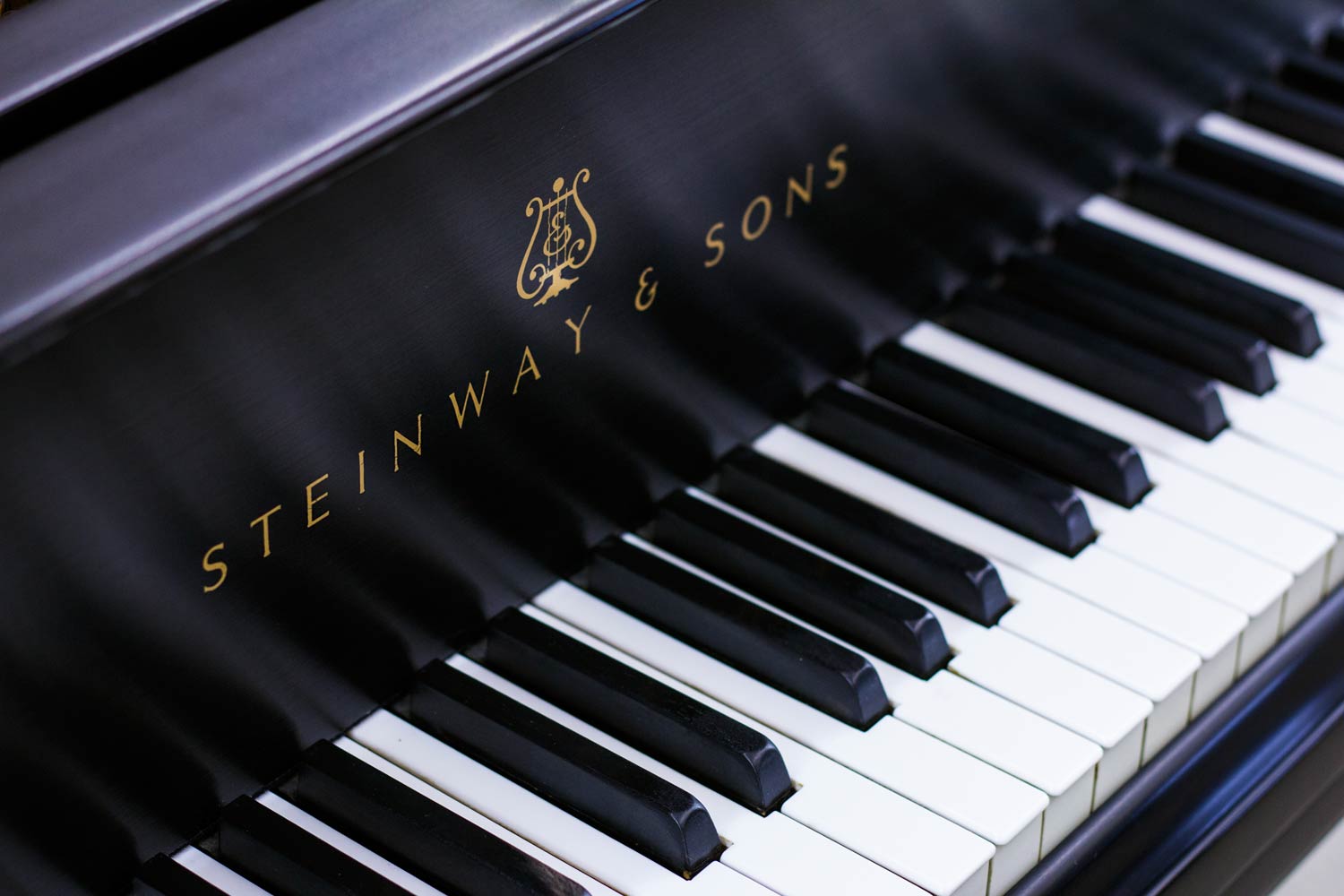
Steinway & Sons Logo & Keys
Born February 15, 1797, Heinrich Engelhard Steinweg became orphaned after experiencing the ramifications of the Napoleonic campaign and other wars and political unrest in his hometown of Wolfshagen, Germany.
In the aftermath of losing his family, Heinrich Engelhard Steinweg joined the Brunswickers regiment in 1815 in an attempt to combat Napoleon’s forces in Germany. His military service culminated in his particpiation in the Battle of Waterloo as a bugler. During his time in service he was afforded the opportunity to be educated in cabinetry and woodworking which would prove to be invaluable to his families’ prosperity and the revolution of what we now know as the piano, beginning the Steinway & Sons history.
His ingenuity, woodworking expertise, and a brief apprenticeship under an organ builder set the foundation for Heinrich Engelhard Steinweg’s career as a musical instrument builder. In 1825, a rectangular keyboard instrument, originating in England, called the fortepiano piqued his interest. The fortepiano, literally meaning “loud-quiet” for its ability to produce dynamic range, (unlike the harpsichord which was the most popular keyboard instrument during this era) was where Heinrich Engelhard Steinweg began his musical instrument designing and production career.
Steinway’s First Piano:
Steinweg built his first fortepiano in 1825 and presented it to his wife as a wedding present. In the kitchen of their Seesen, Germany home, he innovated his design for a grand fortepiano in 1836 (which is now on display at the Metropolitan Museum of Art in New York). Assisted by his sons, Heinrich Engelhard Steinweg was able to produce as many as ten instruments a year, selling many of them to distinguished individuals for sizable prices.
Political unrest and economic downturn influenced much of the Steinweg family to immigrate to New York on June 29, 1850. Steinweg gave his business to his son C.F. Theodore Steinweg who decided to remain in Germany. Upon arriving, their cabinetry and musical instrument building experience permitted the Steinweg family to gain employment at various piano builders and integrate into the evolving New York culture. In an effort to avoid the discrimination many immigrants faced, Heinrich Engelhard Steinweg decided to change his name to Henry E. Steinway.
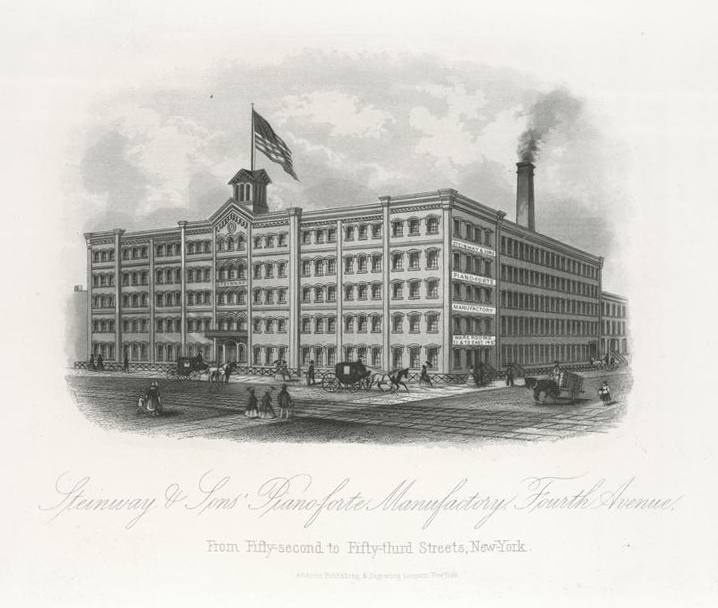
Steinway & Sons Factory on 4th Ave. in New York.
Spending his life working for other piano builders was not the family goal. The dedication, perseverance, and craftsmanship of Henry Engelhard Steinway led to the official founding of Steinway & Sons on March 5, 1853. The Steinway family’s innovation, meticulous nature, and strong family ties were the foundation of the renowned corporation it would become. Henry Engelhard Steinway was reportedly so meticulous that during the building of their Fourth Avenue factory in 1860, he oversaw the construction and prevented the use of a single rafter or beam that contained an imperfection or knot.
“It is not merely a piano with amazing tone and touch, it is a piece of world history.”
Steinway competed rigorously against other piano makers during this period. William Steinway’s diary (which has recently been placed online) details many industry ‘battles’ against rivals such as Albert Weber and the famed Chickering company. Expansion for Steinway continued throughout this period. In the mid-1860s, C.F. Theodore Steinway left his company of Grotrian-Steinweg and moved to the United States to join the family venture. An incredible engineer and piano designer, he patented dozens of innovations that had a tremendous impact on not only Steinway & Sons but the piano industry as a whole. With a combination of his engineering talents and William’s business mind, the company began to gain ground on its competitors. During the period between the late 19th century and the start of WWII, Steinway went through what many consider to be their golden era. Quality increased and innovation reigned supreme. In 1875, Steinway opened Steinway Hall in London to further their worldwide reach.
- The Legendary Rim Press – Circa 1934
- Plate Casting at the New York Steinway Factory – Circa 1934
- Stringing a Model M – Printed in Fortune Magazine
- Steinway family leadership
- All male members of the Steinway family – Circa 1953
To increase their appeal to the European market, Steinway & Sons opened a factory in Hamburg, Germany in 1880. This venture was owned entirely by C.F. Theodore and William Steinway and was separate from the New York business. Pianos built in the Hamburg Factory share many of the same techniques and innovations as their New York brothers. Engineers and designers share ideas between the two factories as well. However, there are differences that make these instruments unique and sometimes preferred by pianists. During the ‘Teflon controversy’ Hamburg Steinways refused to utilize the new Teflon parts pushed by their New York counterparts. The Hamburg factory also constructed and continues to construct models that have been discontinued by the New York factory, adding another layer of uniqueness. [For example, Hamburg still manufactures the Semi-Concert Model C Grand Piano which falls between the Model B and Model D in size.]
The Sale of Steinway | Steinway Today:
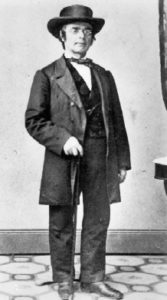
Henry E. Steinway
The family’s success was not without adversity. In the early 1860s, the Steinway family was forced to pay off rioting civil war draft resisters to prevent them from vandalizing the Steinway & Sons factory. Production was suspended for nearly two years in 1932 due to the great depression and again in April of 1942 by order of the government because of wartime material rationing. Both the Hamburg, Germany and New York Steinway factories were converted to aircraft assembling facilities during World War II and Hitler forced the Hamburg factory to use their own wood supply for rifle stocks and aircraft parts. Additionally, the Hamburg, Germany factory barely survived multiple bombings during the 1940s. (This is why it is hard to find documentation for certain Hamburg Steinway & Sons pianos from this era.) Quality fluctuated throughout the mid 20th century with the Teflon controversy highlighting a somewhat tumultuous time for Steinway during this period.
Following the founding of Steinway & Sons, the Steinway family experienced over a century of success before selling the corporation to Columbia Broadcasting System (CBS) in 1972. Henry Z. Steinway was the last Steinway family member to serve as President of the company. His time at the helm came to an end in 1977 and he continued at the company in various positions until his death in 2008.
The Steinway company was sold two more times before it was purchased by Paulson & Co. in 2013, with John Paulson himself assuring that Steinway in both name and product is here to stay. In the early part of 2016, Steinway announced the largest marketing campaign in its company history in order to reach out to new demographics. This push toward expanding beyond their traditional market shows the companies willingness to grow and continue into the future. This will help ensure the continued success of the Steinway name.
A Rich History of Craftsmanship:
Considering the Steinway Family’s dedication to their craft, their 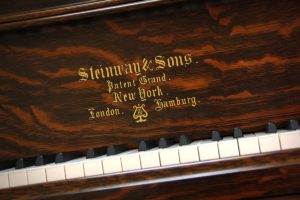 perseverance in overcoming adversity, and groundbreaking innovation, it should be no surprise that they revolutionized an instrument and produced the world’s greatest piano. Each of these early vintage Steinway pianos was crafted with the finest available materials and with great pride in the craftsmanship that reflected the Steinway family name. A lasting reputation for unsurpassed tone and quality was crafted alongside each instrument produced at the Steinway & Sons factories.
perseverance in overcoming adversity, and groundbreaking innovation, it should be no surprise that they revolutionized an instrument and produced the world’s greatest piano. Each of these early vintage Steinway pianos was crafted with the finest available materials and with great pride in the craftsmanship that reflected the Steinway family name. A lasting reputation for unsurpassed tone and quality was crafted alongside each instrument produced at the Steinway & Sons factories.
Understanding the journey behind the Steinway history is necessary to fully appreciate the fine instrument that bears the name. It is not merely a piano with amazing tone and touch, it is a piece of world history, the finest canvas on which a musical artist can express themselves. A family story of dedication and perseverance and an illustration of the finest craftsmanship and ingenuity coupled with premium materials. A piano that defined a golden age. Steinway & Sons pianos truly are the instrument of immortals.
Chupp’s Piano Service | Specializing in Premium Steinway Grand Piano Restoration


